#Shannon don't look
Explore tagged Tumblr posts
Text
i know tumblr isn't inundated with fitz haters like other platforms are but i still see people (wrongly) assume that fitz talks about being cognates with sophie a lot (even if they say it affectionately). so. here are all the times fitz canonically says something along the lines of "but we're cognates!" in the entire series:
“I’m aware,” Mr. Forkle said. “But I only need Miss Foster and Mr. Sencen for this.” “But I’m Sophie’s Cognate!” Fitz argued.
“Doesn’t matter,” Sophie said. “Wylie needs my help.” “For what it’s worth,” Blur chimed in, “I think she’s right. I think you should take her.” “Take us,” Fitz corrected. “This has Cognates written all over it.”
“Last chance to change your mind. I can handle myself.” “Oh, I know. I’m planning on hiding behind you if we end up facing anything scary. But we’re Cognates. We’re stronger together.”
“And you can ask Gethen about it,” Fitz added. “I still can’t believe you’re doing that without me—what’s the point of being Cognates if they don’t let us work together?”
“Wait for it,” Keefe jumped in, right before Fitz added, “We’re Cognates.”
“But you went in alone,” Fitz reminded her. “Now we’d be taking him on together.” Ro clapped her hands, jumping up and down. “Oh! Oh! This is the part where he’s going to remind you that you’re Cognates!” “Well, we are!” Fitz snapped back, looking like he’d had about all he could stand of Ro’s interruptions. (is it just me or is this one sort of dubious. because it's not actually fitz that says it. or whatever. idk i'll count it anyway i guess)
so fitz uses the "but we're cognates!!!!" excuse a grand total of six (6) times (once in neverseen, thrice in lodestar, once in nightfall, and once(?) in legacy) over the course of the entire series to try to get in on a plan involving sophie. it works exactly two (2) times, both in lodestar. he also only actually says the words "but we're cognates" one (1) time in the entire series
also ro pisses me off . . . you'll notice all the times fitz says "but we're cognates" or something to that effect happen before ro is even introduced to the series so there's no way she could even realistically know that fitz says that a lot ("a lot" . . . obviously he doesn't actually say it a lot). shannon is just using her to brainwash you into thinking fitz says that a lot when he does not. same thing with keefe. he wasn't there for all the lodestar ones, so he's only heard fitz say something along the lines of "but we're cognates" one time. once. oh my goodness. the only reason people act like fitz says this a ridiculous amount is because the narrative is constantly telling you that it's his catchphrase when it is not
so in conclusion people that act like this is something fitz is constantly saying lack basic reading comprehension. he doesn't even say it once for all of flashback. the one from legacy barely even counts. he doesn't say it even once for all of unlocked and stellarlune. idk what to even tell you atp if you genuinely actually think this is something he says a lot
#keefe says “promise me you won't hate me” or “it’s okay to hate me” or something like that around the same amount#if not MORE than fitz says “but we're cognates” but somehow nobody thinks those scenes are repetitive and boring#because shannon is not TELLING you aggressively that it's something he says a lot the way she TELLS you fitz says the cognate line a lot#so you kind of don't realize it. well. you won't realize it if you don't have reading comprehension#but if you actually look past shannon's tendency to tell you will be able to see the light. i promise you. take my hand#anti keefe sencen#<- tags#kotlc#kotlc fitz#fitz vacker#anti ro
82 notes
·
View notes
Text
I just think it's really really insane how eternalia is literally located in new delhi and yet there's barely any Indian characters. literally, the human name for eternalia is new delhi 😭😭😭😭
#it's fine tho bc i really don't trust shannon to write more characters of colour...#just look at the way she writes tam linh wylie and maruca 💀#but this does infuriate me at times#ok at least make the buildings in eternalia to be inspired by Indian architecture!#you don't have to repeat the same descriptions “sparkly glittery colourful buildings”#kotlc#keeper of the lost cities#shannon messenger
64 notes
·
View notes
Text
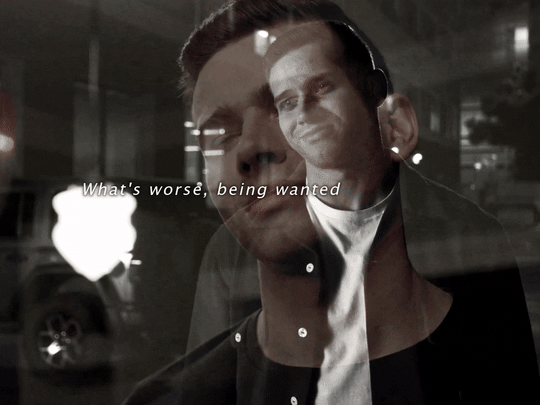
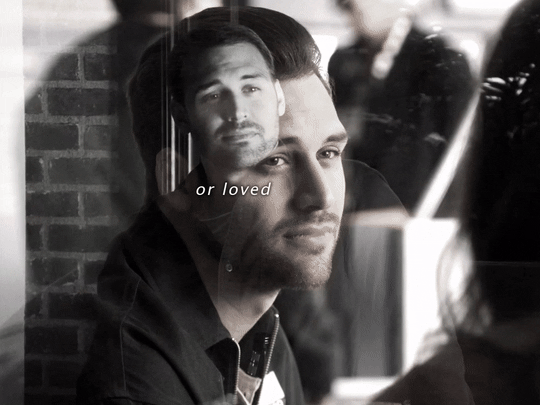
Our love's misaligned...
#911#buddie#911edit#buddieedit#911 on fox#911 fox#911 abc#evanbuckleyedit#eddiediazedit#my edit#otp: you don't need to pretend with me#usercam#i wasnt sure i was gonna do eddies#but i legit was like wait hes looking at shannon the way he looks at buck#lets make this more dramatic than initially planned#also this song is called sand by dove cameron go listen to it#im going to bed now#911verse#evan buckley#eddie diaz
299 notes
·
View notes
Text
i think my breaking point if I was told I was an elf and whisked away to the lost cities would be the leggings. like okay. my family isn't my family, there's a whole secret world, i'm the creation of a rebel organization, there's a different rebellion trying to kill me, the world is rotting from the inside out, okay. I can cope. it'd be annoying and difficult but I could cope. but you want me to wear leggings with everything? under skirts and dresses? with every outfit? no. fuck off I'm out I can't do this anymore
#kotlc#i know they don't wear leggings 100% of the time. they also have pants#but like. they wear them /so much/#look at the covers literally every girl is wearing leggings when their legs are visible#which. admittedly is just sophie and linh#but if you look at other official art. it's all fucking leggings!!#and shannon's practically always describing their outfits with leggings#i genuinely don't know if I could do that#i'd hate it so so much#and like!! sometimes it's not even covering anything!#they have skirts and tall boots the leggings are only showing on their knees!#shannon let them let their knees out!#fucking. i cannot#the sensory input...bad#i need my skin out#let me free my skin#i dislike that aspect of elvin clothing but also. it was not written for me so there's that
282 notes
·
View notes
Text
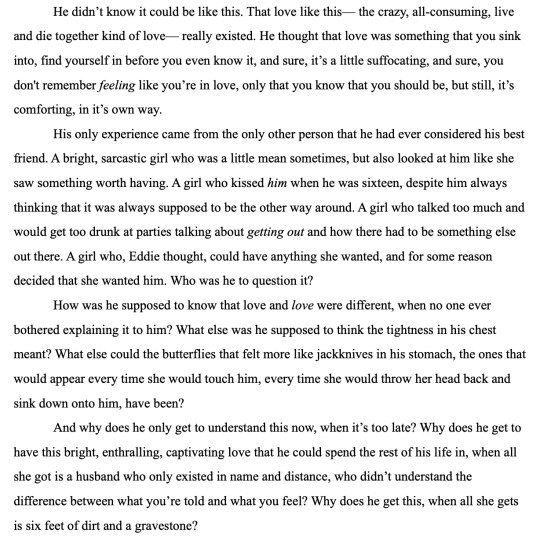
EDDIESHANNON YOU MEAN EVERYTHING TO MEEEEE
#don't even look at me...... he loved her but he felt sick to his stomach every time he was with her and he didn't know why#and now (in this fic) he knows why and he has everything that he thought he had with her but he can barely let himself enjoy it#bc it's not FAIR that he gets this and she got nothing. she couldn't even get a divorce before dying.#loving my eddieshannon established buddie eddie panic attack fic so far.... he's so crazy#911 abc#911 fic#eddie diaz#buddie#eddie x shannon#shannon diaz#where are my shannon lovers........ come on pst pst pst
22 notes
·
View notes
Text
The worst take i've seen on The Priory of the Orange Tree
is saying that the pacing is bad, because the beginning is too long and too slow.
The Priory of the Orange Tree is a book that combines two plots.
One is a fantasy plot, with a complicated origin that dates back a thousand years. I won't elaborate much on that because i'm not even sure i understood the whole thing.
The other is politics. Between 3 "groups" of countries (really it's one group of countries, one country and a religious group, but it's for the sake of simplification), each with their own thousands of years of history, culture and religion. That are all related (greatly related, as we see in A Day of Fallen Night). And these different history, cultures and religions are essential to BOTH plots.
We also have 4 main characters, from these 3 groups, so the author Cannot half ass any of these character's origin country's history, politics, culture and religion.
Yes, the beginning is a bit long, it's difficult to get into it. Not because it's bad, but on the contrary, because the world building is the work of a genius. The book needs these 200 pages or so of just establishing the context (even though Samantha Shannon does it in a way that is not boring at all).
I understand that this type of writing is not for everyone. But you can't say that the pacing is Bad. It's not for you. But it's not Bad.
#please don't look at this#i don't want to be perceived i just needed to rant#the priory of the orange tree#a day of fallen night#samantha shannon
167 notes
·
View notes
Text


Maybe it's a curse. Bad things happen to everyone I care about.
TOYA TURNER as SHOTGUN MARY
WARRIOR NUN (2020-?)
#myedit#mywn#warrior nun#warrior nun edit#shotgun mary#don't look at me i forgot how to gif#idk a colouring#not like anything looks good on tumblr lately anyway#mary at lilith's wake wanting to curl up and cry like she had on shannon's bed#but she's the only one bea and cam have left to look to
143 notes
·
View notes
Text
also ALSO if they do resurrect bobby i feel like this sets up a precedent for 911 when it comes to the permanency of character deaths. what i'm saying is that tim could be doing this to finally get his way and bring back shannon for real just in time for buddie canon
#this is from the person mentioning jane the virgin in the tags on my other post. because god wouldn't THAT be a similar situation#and look i would hate this like a lot. i liked shannon but i hate when this show leans too heavily into telenovela tropes#and i also hated the execution of michael's resurrection in jtv along with 90% of the fandom too#also given the way shannon died it would make literally zero sense for her to be alive but i digress#given how much the show HAS been leaning into telenovela tropes lately i don't think this is entirely out of the question.#like i don't think it's likely or anything i'm mostly just fucking around but. it's really not impossible#shut up hanna
4 notes
·
View notes
Text
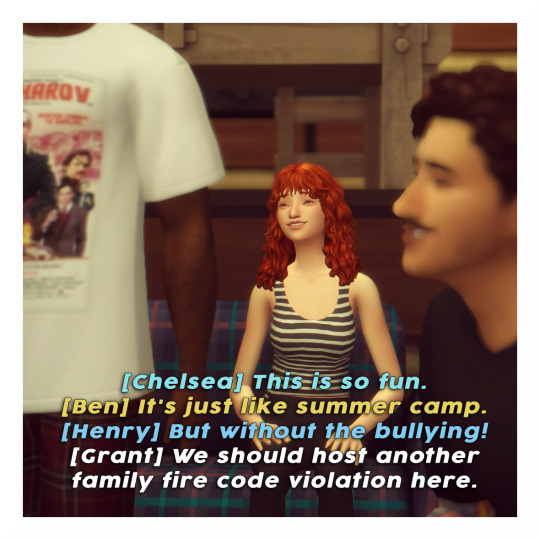
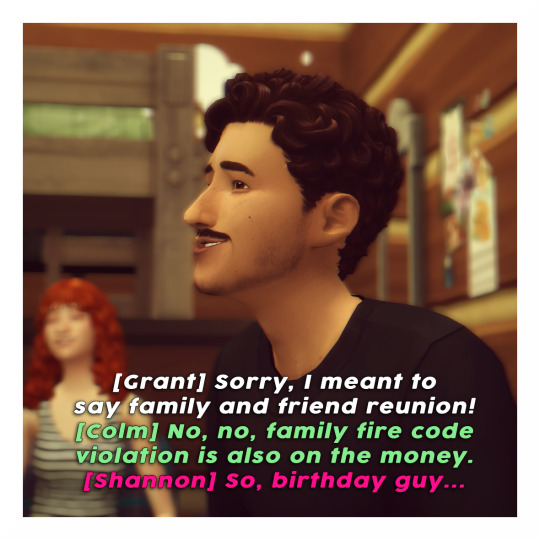

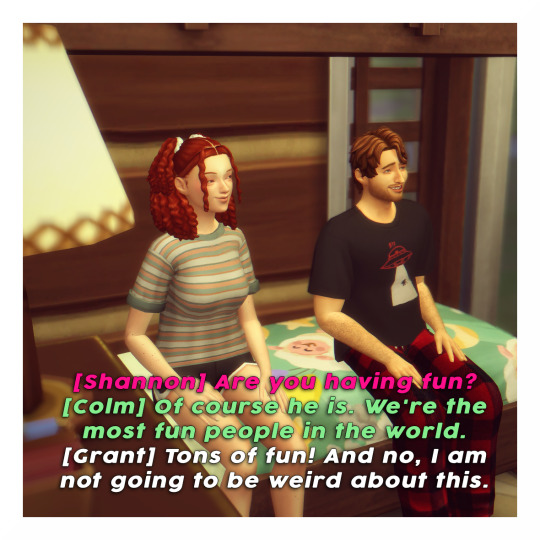

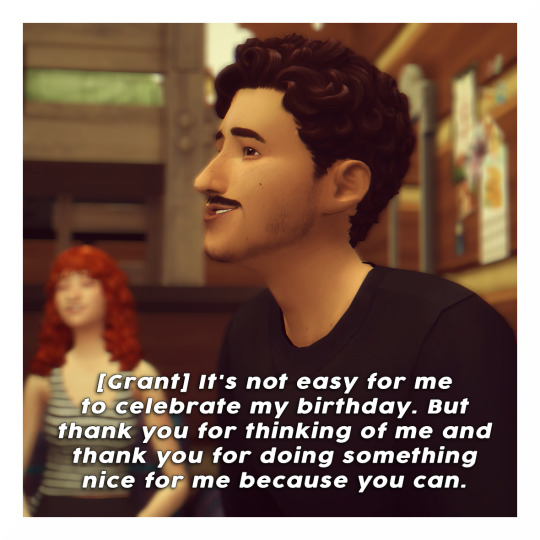

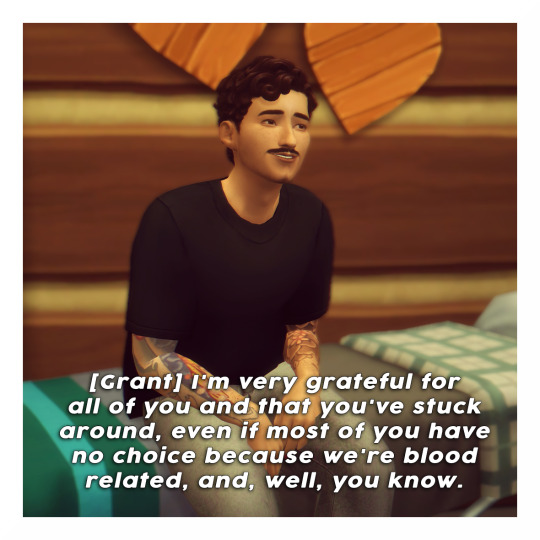
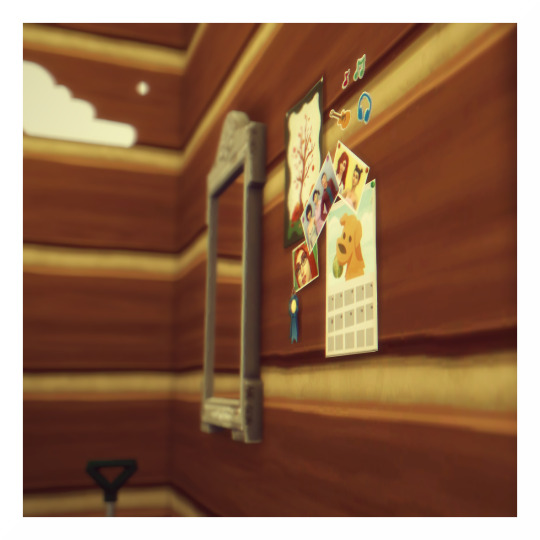

next // previous
august 7, 2021 4:30 a.m. goat soap palace
#ts4#the sims 4#sims 4#sims 4 story#sims 4 storytelling#simblr#hlcn: everything the stars promised#GRANT MY KING YOU REALLY DON'T GOTTA PROVE IT THEY KNOW YOU LOVE THEM#but his monologue is very sweet and very him <3#and the fact that he didn't automatically default to telling them he doesn't deserve this and they shouldn't have done this for him is BIG#i don't know if he's internally on board with that but it doesn't matter - the fact that he at least wasn't vocally self-deprecating is goo#additionally i think he does continue to struggle with looking forward to life and figuring shit out BUT#he 100% does mean it when he says he can look forward to it because he can share those years with loved ones#holocene.docx#holocene.png#hlcn: grant#hlcn: shannon#hlcn: colm#hlcn: henry#hlcn: ben#hlcn: chelsea#hlcn: jasmine
27 notes
·
View notes
Text
guys someone help me does eddie ever actually call shannon his best friend in the show?? like is there a scene where he actually says that ??
#911#911 abc#9-1-1#eddie diaz#shannon diaz#i've been trying to look it up cause i don't remember#i think it's just a fanon thing no??#mine
2 notes
·
View notes
Note
would you rather
make out with Keefe OR
make out with alvar
do you hate me
#probably keefe. alvar's a fuckboy and even if keefe did look up to his fuckboy-ness at one point at least he never went full-on fuckboy#alvar makes me irrationally angry. like i don't think you understand how much i just hate him as a villain and as a character#and yes. those are the same things i say about keefe. but at least with keefe shannon isn't trying to let TERRORISM slide#i talk a lot about how keefe is NEVER held accountable by the narrative for his shittiness (which is true) and how i find him----#----excruciatingly annoying (which is true) but somehow BOTH of those things for keefe pale in comparison to what shannon did with ALVAR#god i hate alvar. possibly even worse than keefe. but we'll have to see#i read unraveled almost in the middle of the night my memory of it is not fantastic at the moment. i'll do a reread soon#anti alvar vacker#anti keefe sencen#oh and alvar and keefe as a duo suck as well. hated them :)#sorry for being a hater but uh. yeah. they are probably now my least favorite characters in the series so. well#asks#a-frog-named-charlie#kotlc#kotlc unraveled#unraveled#kotlc unraveled spoilers#unraveled spoilers#kotlc spoilers#book 9.5 spoilers#kotlc book 9.5 spoilers
28 notes
·
View notes
Text
keefe was actually insane for this
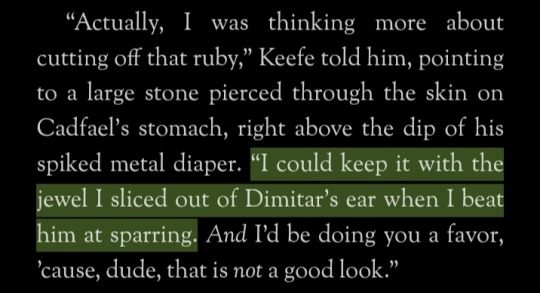
#I've been slandering keefe a lot lately so.... here's some keefe appreciation!#ok but srsly#other than sophie obviously being the main unfortunate victim#keefe is also a victim with the way the fandom barely pays any attention to his character and only focuses on his good looks and sokeefe#like yes he is loved but do y'all ever see people actually CARING about his character?? other than yk...sokeefe#don't come at me for this one i know shannon has been focusing the last few books on him#but im deadass serious when i say that barely anyone talks about his character as a whole#keefe is genuinely an incredibly cool character#and i legit screamed when i read this part#“I could keep it with the jewel I sliced out of Dimitar’s ear when I beat him at sparring.“ is SO CUNTY LIKE#the girls who get it get it#kotlc#keeper of the lost cities#keefe sencen#kotlc flashback
226 notes
·
View notes
Text
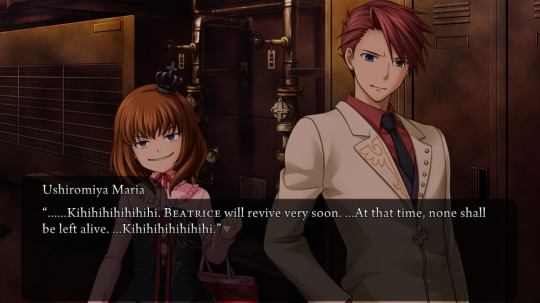
something i think needs clarifying is whether or not beatrice's revival is a binary process where she's only present once the ninth twilight is reached and not a second before or if it's a more gradual manifestation process where her presence grows in strength with each twilight culminating in the ninth
#umineko liveblog#like sure she's not revived yet. but can she appear at all at this point?#obviously maria has to be taken with a grain of salt because half her knowledge is just the witch narrative rather than actual beatrice lor#because shannon saw butterflies before the first twilight which contradicts the witch narrative as well#or maybe it doesn't. because we don't really know what beatrice 'reviving' will actually look like/entail
22 notes
·
View notes
Note
thought on the significance of colors in kotlc?
This is rather broad; there's many approaches here. We could talk about the obvious world ruled by light, both groups of rebels associate w/ black situation--and the intrigue in having two opposing rebel groups both being black (ignore the technicalities of it being a shade). There's also the few characters with very strong color ties--Sophie and red, Fitz and teal, Oralie and pink, Tam and black.
Red's blood, anger, war, violence, and more, all tied to the role Sophie has found herself part of; she is the center of this war, more accustomed to violence than her peers--and its the color her aura glowed in the seat of eminence. It's also associated with love and strength, more positive connotations that embody what she brings and what she fights for. Sophie wears a lot of white on the covers, making it also the color of children's hospitals, a place where Sophie spends a lot of time
A quick search associates teal with clarity and open communication, which is fitting for Fitz; his whole thing is trust and being honest with each other--and the fact he was the one who opened Sophie to this other world, helped her see with clarity, is notable. Apparently, Egyptians saw it "as representation of faith and truth," which is a reaffirmation of the first point. It's also interesting that teal and red aren't opposites, but are rather...opposite adjacent? Close but not quite.
There's also the very obvious Oralie/Pink, Tam/black associations. Pink is feminine, loving, compassionate--all traits Oralie embodies. Of note though is that pink is opposite of green, the color of life for elves. Her life does not appear to be in danger, but it does seem entwined with tragedy and loss, to an extent. Perhaps fitting that green is opposite red as well, and pink is simply a subtler shade of red; she does not suffer full opposite association, but is still touched by it. Tam's seems too obvious to need much explaining; he's a shade, works with shadows, associated with secrecy, distrust, etc.--though not death. Black doesn't mean death for elves.
We don't have many characters this obviously tied to colors, however. Instead we can circle back to the one other color in the lost cities that stands out: green. The color of life, worn in mourning. Which we could also compare to the typical black (in Shannon's background), a color we've already associated with rebels. The rebels then, in a sense, both do and don't represent death/change; to those of us aware of black's association with death, we see the comparison, but within the universe they're instead associated with secrecy and fear and shadows (like Tam), the antithesis of their light society. Returning to the green specifically, we could also pull in Sophie's red; as a complimentary color, she could be said to compliment life. It is her war, her violence, her passion, her strength that will aid and proliferate life in the lost cities.
I'll stop here for now, but I'm sure there are several other ways to look at color--if you (or anyone else) had a more specific idea in mind, please do tell me, I'm kinda take a stab in the dark here about what kind of color significance you're commenting on :)
#kotlc#kotlc analysis#quil's queries#nonsie#this was sent several months ago rip I don't even know if you're still here </3#not like you're dead but people pass through keepblr a lot#anyway#they got colors thumbs up#this isn't even looking at the colors in the seat of eminence...#i suppose we could also look at the colors of each councillor#but looking at councillors is really difficult because there's so little about each#practically anything you say about all but four of the 12 is entirely personal speculation and fabrication#but i'm fairly confident shannon chose their jewels based more on color than the jewel's symbolism themselves
20 notes
·
View notes
Text








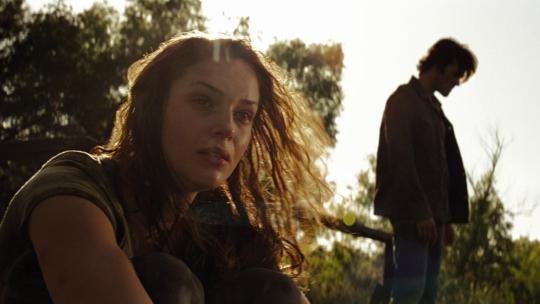

Friday the 13th (2009)
"Jason. My special, special boy. They must be punished, Jason. For what they did to you. For what they did to me."
#friday the 13th#jasoniad#2009#marcus nispel#damian shannon#mark swift#jared padalecki#danielle panabaker#amanda righetti#travis van winkle#aaron yoo#derek mears#jonathan sadowski#julianna guill#ben feldman#arlen escarpeta#ryan hansen#willa ford#america olivo#nana visitor#nick mennell#surprisingly fun retread of a hoary old franchise. was inspired to look this up after watching the 2013 Evil Dead‚ a whip smart reimagining#of a pre existing concept; this isn't that film‚ and it isn't interested in doing anything really that's new or unexpected#instead it blasts through a rapid recap of the og film and then delivers cherry picked highlights from the sequels (with particular#emphasis on films 2 and 3). and that's actually fine! bc this is kind of a fun best bits compilation and that may not make for#cinematic immortality or a revamped new franchise but it makes for a fine time when watching a movie while eating crisps in your home#the supporting cast are a fun assembly of exaggerated personalities (which is also quite faithful to the original films) but it must be#said that the leads (particularly the rather.. subtle.. personality of Mr Padalecki) don't offer quite the same good value#still im glad to have officially finished the Jasoniad some 18 months after I started it!#oh also a minor complaint: absolutely does not use the iconic original theme enough‚ only really teasing it briefly in one scene
4 notes
·
View notes
Text
new profile pic that i poorly edited on the train everyone say hiiiii waitress 🤩
#sad but i really don't want to look at kaitlin lol#i tried to separate it in my mind and be like it's dee it's dee it's dee it's dee but#couldnt take it anymore#shut up shannon
6 notes
·
View notes